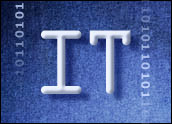
As wireless communications technology becomes embedded in the lifestyles of consumers — led by the younger generations that have always known it — small businesses are seeking ways to catch the mobile wave.
Gaining an advantage with younger shoppers online and off can be daunting to small businesses that would rather not manage technology — but instead exploit it. I recently moderated a sponsored podcast that tells the story of how UPS extended its global package delivery tracking and Quantum View services to the wireless domain, and reached out in whole new ways via short message service (SMS) texting to mobile devices.
One small retail business in Michigan, Moosejaw, uses UPS as its technology and logistics source to wirelessly aid its clients — to help them stay in touch, provide a strong sense of community, and to give them access to whatever information they may want on how to get their purchases quickly and easily. Some even got some lessons in dating. Go figure.
It turns out that weaving the use of SMS into B2C (business-to-consumer) and B2B (business-to-business) conversations has some unintended and auspicious viral consequences. Here’s how UPS and Moosejaw teamed up to let mobile users get their delivery data their way. We’re joined by Jeff Reid, UPS’s director of customer technology marketing, and Robert Wolfe, the cofounder of Moosejaw.
Here are some excerpts:
Robert Wolfe: I started the company when I was 21, and had absolutely no clue what I was doing. So when customers would come in the store, we were playing Nintendo or whiffle ball, and we asked them to join us. And that ended up turning into our marketing theory. So we really try to connect with the customer on a level that’s not just about the product.
So far it seems to be working. We definitely have more high school and college students, not only as our customers but also as our staff. And that’s really how we ended up being so proactive about wireless technology. Because when I look around and see everyone at Moosejaw, they don’t even talk to the people three seats away from them — they SMS text them. And half of them don’t even use their computers anymore; they just use their mobile phones and personal digital assistants.
When we began seeing that internally, we knew that we have to be first-to-market with all of that kind of wireless technology — and UPS has helped a ton, and not only with traditional tracking. I call it “traditional” even though it’s still pretty new. UPS began helping us all the way to getting tracking numbers tested, which we just started very recently. And it’s already been hugely successful. And when I say, “hugely successful,” we have had a lot of people sign up — but more importantly, the people who have signed up have loved it.
It sounds funny. You really don’t need to find out where your stuff is at that very movement, but it’s just that the whole idea of being able to use your phone for everything — our customers expect it. If we are not texting information to them, then we are yesterday’s news. We have to be able to embrace that kind of technology.
If it so happens that we sell products that our demographic loves — and it wouldn’t really matter if that product were coffee mugs — the fact that we are sending tracking information through a mobile phone is what’s important. Our customers are more likely to tell their friends that they just got their tracking number to their phone telling them when their new sunglasses are coming.
Jeff Reid: Our customers have become more mobile as their businesses have grown, and their lives converge with their day-to-day work activities. So we find a lot of customers are using our mobile capabilities to extend their flexibility and productivity outside of work.
Small businesses and individual users are the primary users of our wireless capabilities. So it is meeting our expectations of who would use the wireless capabilities. Yet it’s amazing how wireless services and our tracking information has made it even onto the golf course nowadays, where people are using it in all facets of their life — to check on that birthday gift to all the way down to managing their global supply chain. … The majority of the usage for wireless tracking comes from individuals in small businesses.
Some of our customers have large-scale service engagements where they have delivery vans out making calls. They require that a part be at a house before they can actually fix an item that they are going to service. So these large companies leverage our wireless capabilities to track a package within the van, so that they can determine whether or not that call will be effective — if the part has arrived or not. That’s an example of where efficiency throughout the supply chain is being introduced, and wireless tracking is certainly a large component of that efficiency equation.
We have wireless capabilities in over nine Asia-Pacific countries. It’s available in 24 European countries. Of course it’s here in the United States and Canada. It’s also available in five Middle East countries, and also in South Africa. So as long as you have a connection in any of those areas, UPS certainly has information that you can consume.
Dana Gardner is president and principal analyst at Interarbor Solutions, which tracks trends, delivers forecasts, and interprets the competitive landscape of enterprise applications and software infrastructure markets for clients. He also producesBriefingsDirect sponsored podcasts. Disclosure: UPS is a sponsor of BriefingsDirect business productivity podcasts.



















































Social Media
See all Social Media